Affiliate disclosure: This post may contain affiliate links. Please see our Privacy Policy.
Fresh lemongrass isn’t something you see every day. It’s one of those things that’s usually reserved for ethnic markets and specialty stores. You can imagine my surprise when I came across bundles of fresh lemongrass in our local food coop, with a big bright tag that says “Locally Grown in Vermont.”
Vermont grown lemongrass?!?! Really? I always assumed I’d have to live in the south pacific to grow something as exotic as lemongrass.
We already have homegrown Hawaiian ginger and tiny chocolate trees started from locally grown cocoa pods, so it’s time to add lemongrass to our exotic garden!
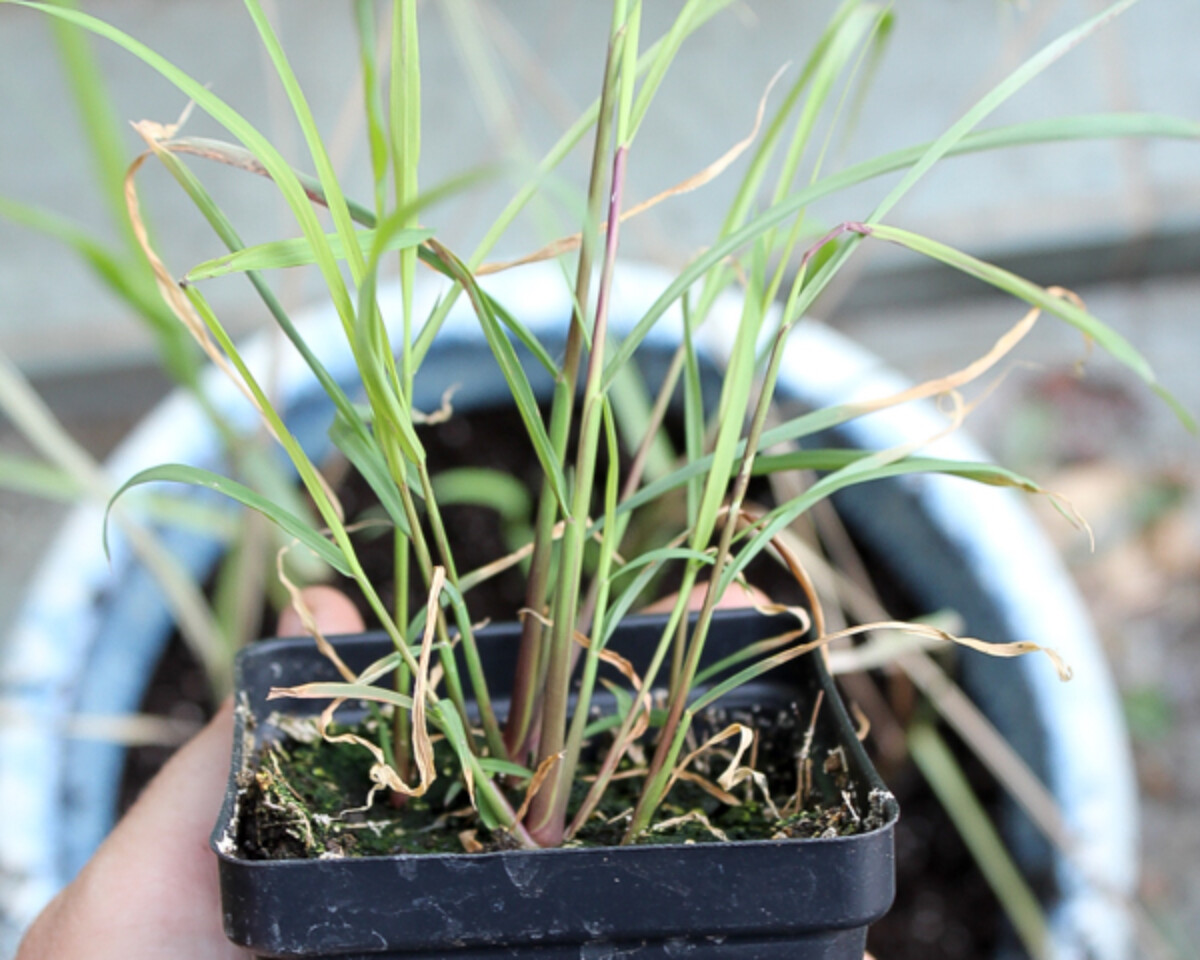
Beyond the fact that it’s just exciting to see something tropical growing right in your own yard, lemongrass is a natural mosquito repellant. Even if you’re not an adventurous cook and you never plan to harvest, lemongrass is still beautiful, fragrant and naturally repels mosquitoes.
How to Grow Lemongrass from Seed
Lemongrass can be a bit tricky to grow from seed and requires extra attention to ensure germination. In cold climates, lemongrass should be started indoors to ensure that it has time to mature in a short growing season. The problem is, they also require high humidity and a soil temperature of roughly 70 degrees to thrive.
For the best success, try using seedling trays with a plastic dome to contain moisture and warmth. A seedling heat mat will be a big help at keeping the soil a continuous toasty 70 degrees.
It’s a tricky balance because they require a moist but not “wet” environment, and with all that humidity and warmth, fungal issues are not uncommon. If you’d like to try it, lemongrass seeds are available here.
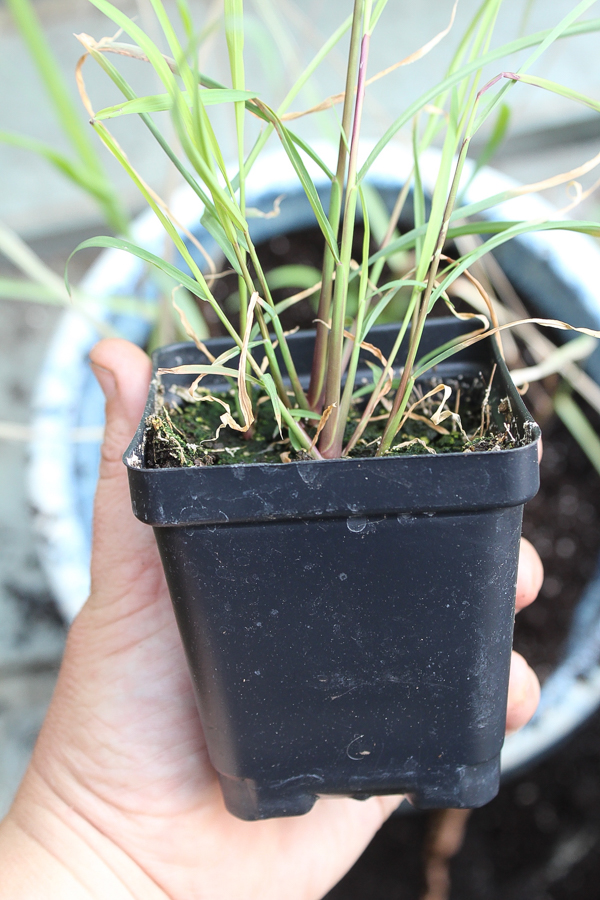
Growing Lemongrass from Cuttings
Since lemongrass can be so difficult to grow from seed, most gardeners start lemongrass from cuttings. The trick is, lemongrass stalks can be difficult to find. If you happen to have a good ethnic market or an upscale food coop, you might just get lucky.
Even still, if you want to grow lemongrass stalks, they have to have a bit of the base intact. If you cut off the top and bottom inch of a carrot, it won’t be able to grow, and lemongrass sliced up too high just won’t root.
I’ve seen lemongrass stalks in those tiny plastic “fresh herb” boxes at the grocery store, and they’re just a 3-4 inch section of the middle of the plant. If you look at the bottom of the stalk, there should be a distinct end of the above-ground portion, and below that is the rooting base.
That must be intact for success. If the plant is cut up high enough that you can see actual rings, like when you slice through a leek or scallion, then it won’t grow.
In the picture below, you can see where the leaves wrap together at the bottom of the lemongrass stalk, and then the new growth roots and shoots come out below that point.
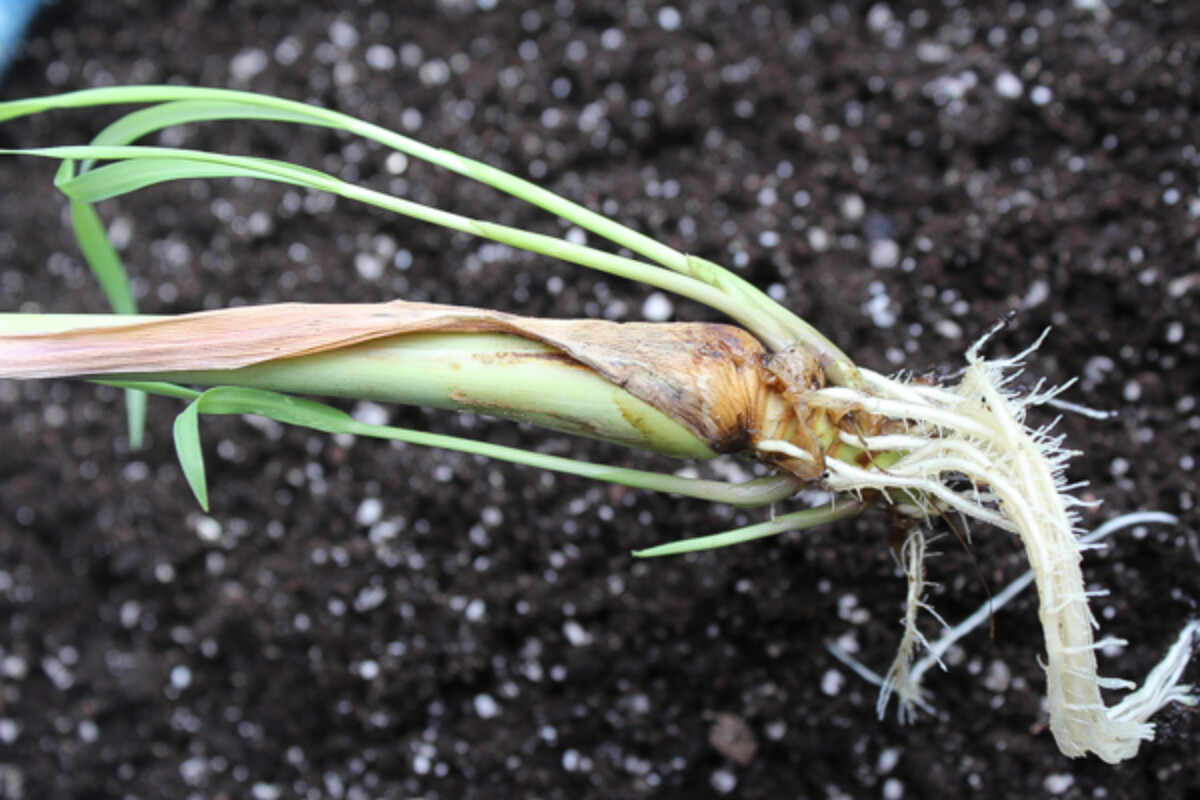
If you’re lucky, and full completely intact lemongrass stalks are available at your local supermarket or ethnic market, buy the freshest looking ones and put them in a jar with 1 inch of water. It can take about a month for them to develop healthy roots, so be patient. For most people though, the best option is to buy pre-rooted lemongrass cuttings online, and those are ready for planting on arrival.
Lemongrass Plant Care
So now you’ve got a few lemongrass plants growing, how do you tend them? Honestly, once it’s growing, lemongrass is very easy to tend. The plants tend to self-propagate, and they’ll constantly send off side shoots and expand even in small pots.
The only real risk is cold temperatures. Lemongrass is a subtropical plant and cant handle freezing temperatures.
Ideally, they want temperatures constantly above 50 F. Only the very hottest regions of the United States can grow lemongrass outdoors.
For the rest of us, it’s a potted plant that comes indoors for the winter. Honestly, it comes indoors for the spring and fall here in the frozen north too. We only have maybe 2-3 months of the year where temps don’t dip below 50 at night.
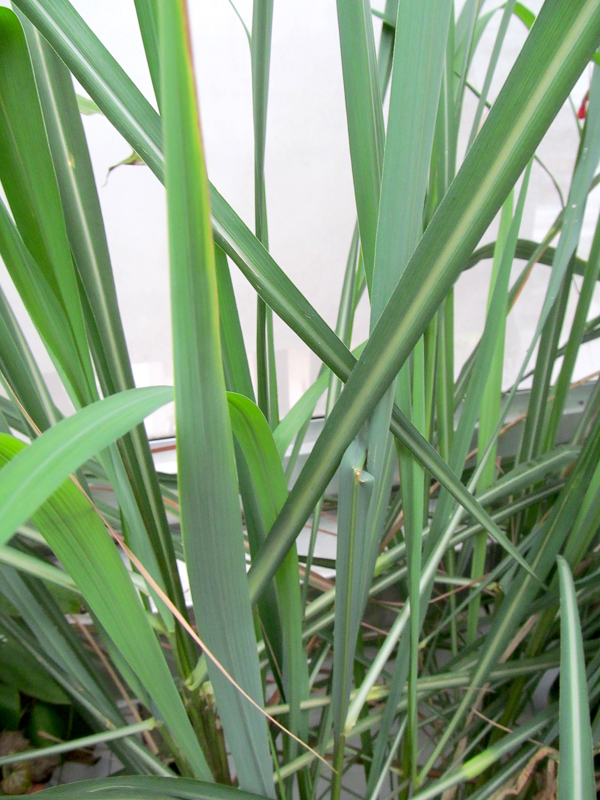
Lemongrass plants require good moisture, in well-drained soil. Be sure to water often to keep the soil just damp but not soggy. Since they’re mostly green grassy material, lemongrass plants are high nitrogen feeders.
Be sure to top dress with compost every few weeks, especially since they’ll likely be in a pot and unable to send their roots scavenging elsewhere. Fertilizers like worm castings or alfalfa meal will ensure vigorous growth.
At the end of the growing season, when outdoor temperatures are approaching 50 degrees F, it’s time to shift your plants to indoor mode. Cut the stalks back, leaving them about 6 to 8 inches tall and move the pots indoors to a well ventilated sunny spot that stays consistently warm through the winter months. Reduce feeding and watering, just barely keeping the soil moist.
In the spring, divide the overwintered lemongrass into new pots with ample space to resume growth. Resume watering and feeding, and begin the process all over again. You should have plenty of lemongrass babies to share with your friends, or enough for heavy harvests, your choice.
Harvesting Lemongrass
Now comes the part we’ve all been waiting for…the harvest. Use your finger to dig a bit around the roots, exposing the base of the stalk.
With a sharp pair of scissors or a knife, cut the lemongrass off just below the soil level, where the stalk narrows and turns to roots. Stalks should be at least 1/2 inch in diameter at the base before you attempt to harvest, but they can grow much larger if you give them time and nutrients.
The tightly bundled base of the plant is the part that’s most commonly used in cuisine. It’s also the best for preserving in rice vinegar as pickled lemongrass for use all winter long. The leafy tops are more delicate, and they can be chopped and dried for refreshing teas.
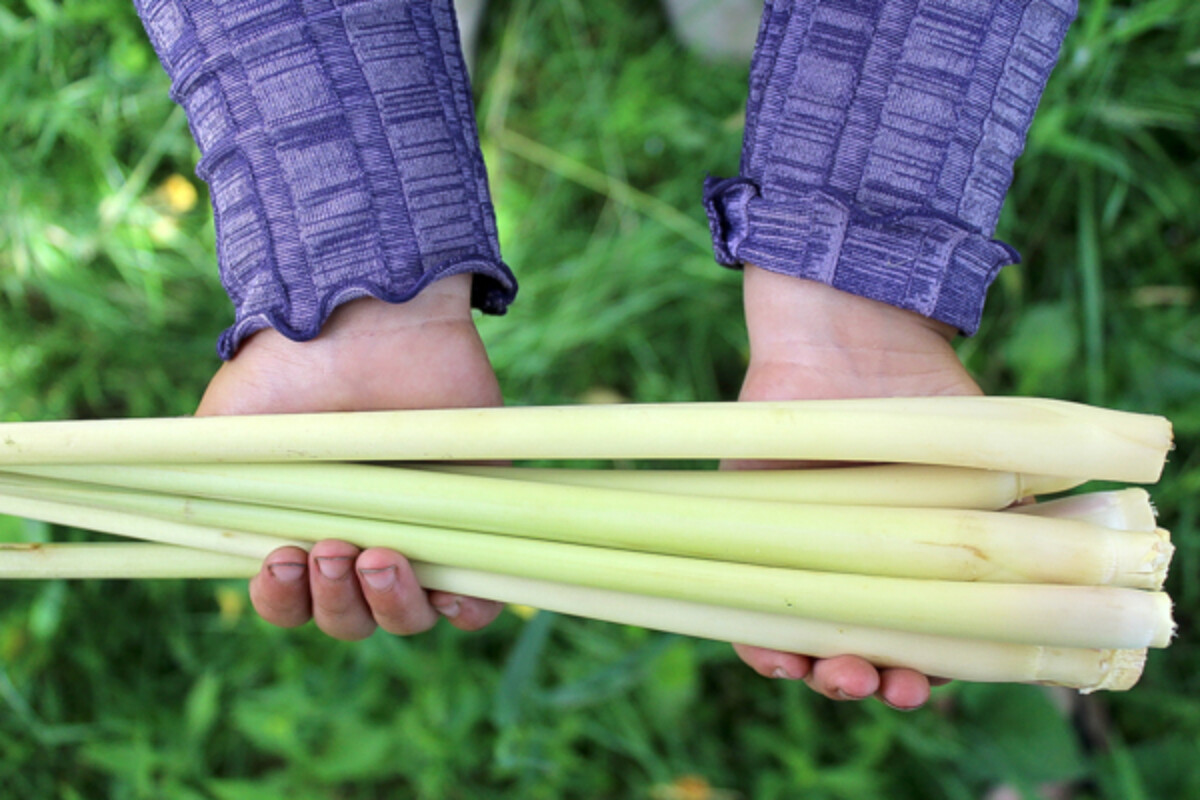
How to Preserve Lemongrass
The simplest way to preserve lemongrass is by freezing. Take whole stalks and wrap them tightly in plastic or a Ziploc bag. The stalks can be removed one at a time for use in cooking. When freezing lemongrass, a bit of the freshness is lost and the texture can become a bit woody, but the distinctive flavor remains.
I preserve my lemongrass in rice vinegar for use all winter long. Small pieces of lemongrass are quickly pickled in the rice vinegar, and they can be stored in the refrigerator for months at a time. The main benefit of this method is that the lemongrass infuses into the vinegar, and rice vinegar is used in many of the recipes that call for lemongrass anyway.
Another great option, if you plan to use lemongrass in creative homemade cocktails, is to infuse lemongrass in a bit of vodka. That’ll add a unique twist to your summer drinks.
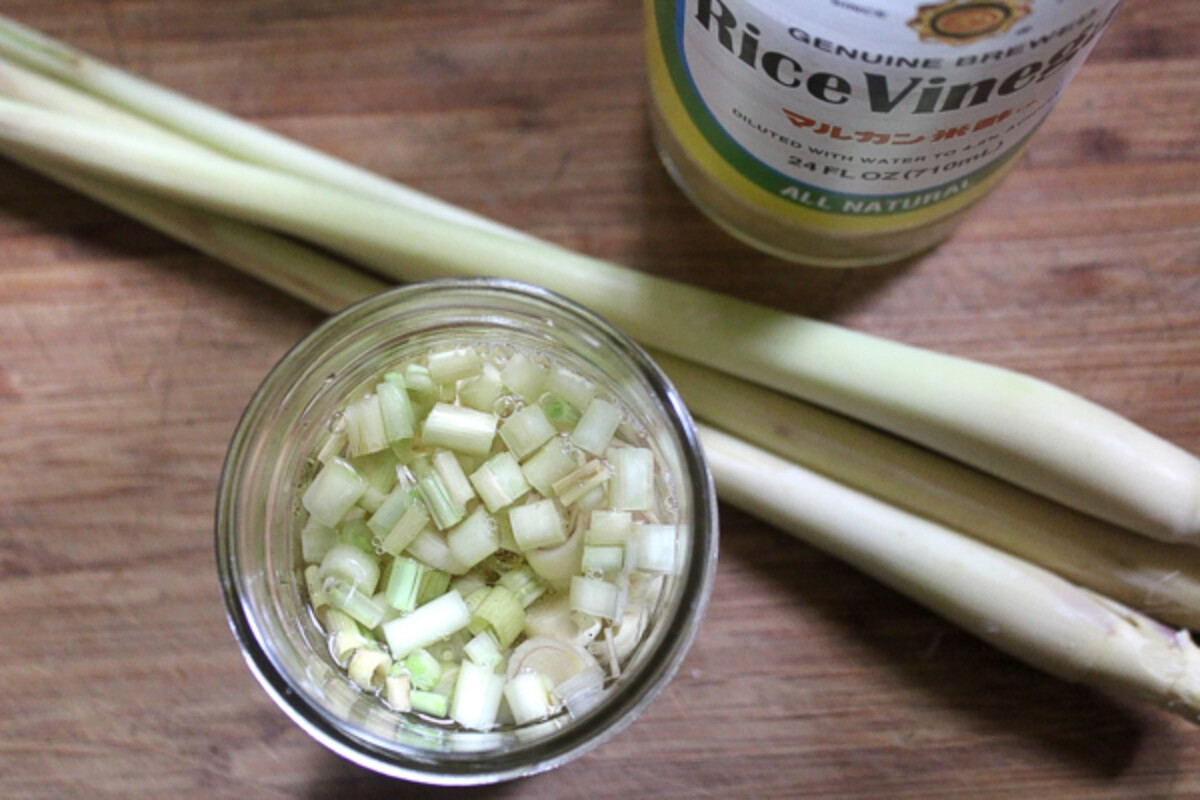
How to Use Lemongrass
Once you successfully grow lemongrass at home, there’s going to be a lot of lemongrass to harvest by the end of the summer. Once it gets going, there’s almost no stopping it. Here are some inventive ideas for using your home harvested lemongrass:
Curries and Soups Using Lemongrass
- Thai Green Curry with Chicken
- Easy Vegan Pho (Vietnamese Noodle Soup)
- Lemongrass Curry Soup with Cashew Cream
- Vegan Thai Lemongrass Coconut Curry Soup
Main Courses Using Lemongrass
- Lemongrass Tofu Banh Mi Sandwiches
- Lemongrass Grilled Pork Tenderloin
- Vietnamese Lemongrass Pork
- Lemongrass Chicken
- Thai Grilled Chicken
- Mango Lemongrass Lemon Wraps
- Chicken Satay with Peanut Sauce
- Vietnamese Spring Rolls with Lemongrass Beef
- Vietnamese Noodle Salad with Lemongrass Chicken
Drinks Using Lemongrass
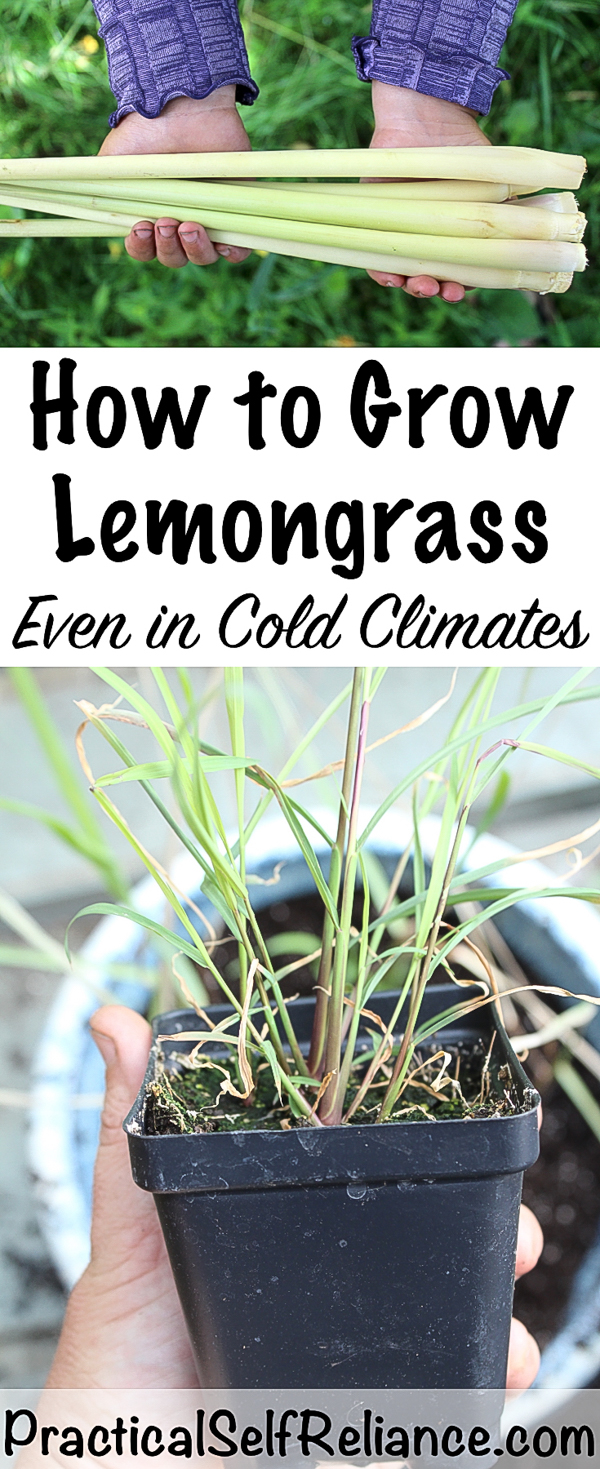
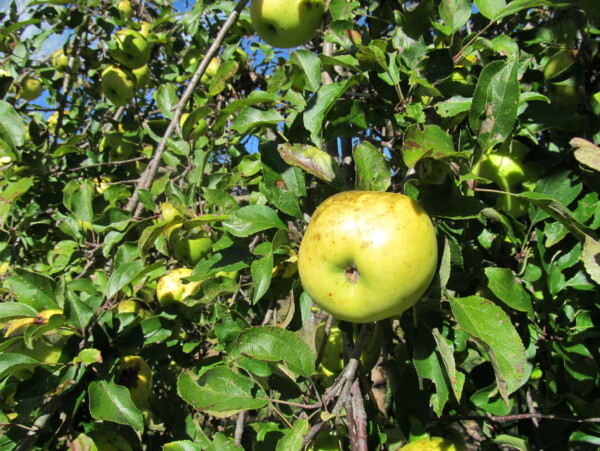













I have 4 pots at 18″ that I being in for the winter. my cats love to chew on it so do not cut it back. It makes a nice jungle for them to play in, along with my ginger, turmeric
This article answered so many questions for me! I live in Atlanta, & I dug out the trash ground under my fire escape and turned it into a 3×4′ raised bed. I used two lemongrass seedlings as part of the plot, and it has grown amazingly well! So well it is dominating the space- thank you for this extremely well written article showing me how to preserve and share this plant!
I am after one place to export my lemongrass. How many thousand of grass I planted on my farm but I am looking for the buyer.
Good luck, I can’t help you with that one.
Should you trim off the dry leaves from the plant, is it beneficial for better growth?
Yes, that will allow more sunlight to get to the living leaves and help keep the plant healthy.
What an excellent article, thankyou!
Question on growing Lemon Grass. I get it from some local ethnic grocery stores like a Korean store. The product looks like your picture holding the harvested plant. My question is can I take the ends of those and put them in water & will they root?
It should. When you look at the end, it should have all the leaves folded around the end, coming together. If you see rings, like the cross-section of a leek, then it’s been cut off too short for planting.